
Stiffler
Scientific 
Copyright (c) 2007-2010, Dr.
Ronald Stiffler.
All rights reserved.
Copying of this
material is strictly forbidden.
Violation of these
Copyrights will be enforced.
Spatial Energy
Coherence
Driver Circuits
Diagram of the driver used in the video 'Spatial Energy Coherence #9.75'
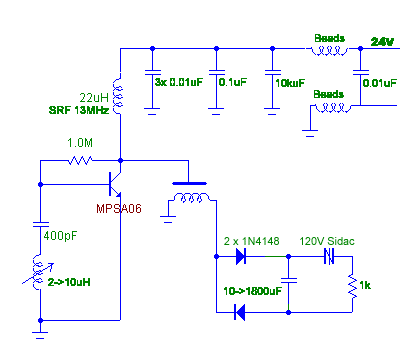
In the preceding diagram the strange driver coil
shown supplying the AV Plug is
composed of a solid copper outer shell around
a coreless Litz wire antenna coil
(as shown through out these pages). The
following images will better explain this
new coil and what it looks
like.
The following image shows one of the coils in a working circuit.
![]()
The following images show a side and end view of the coil construction.
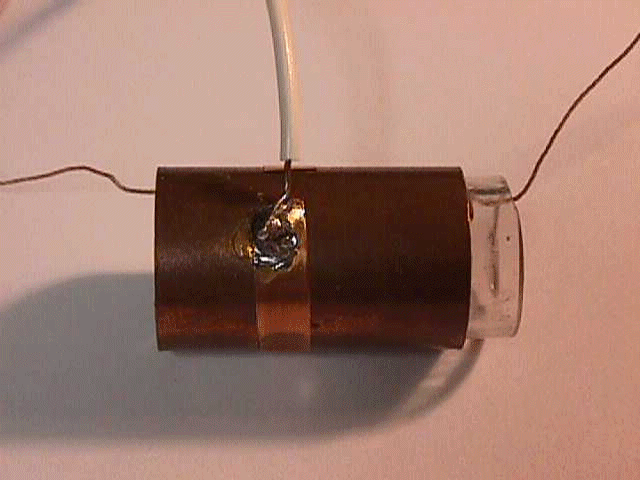
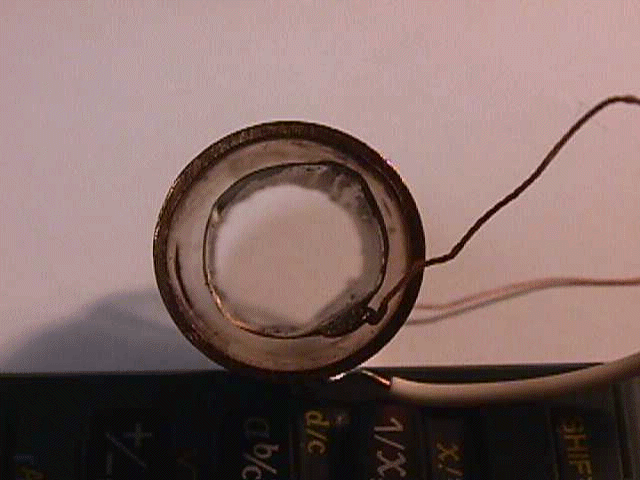
01-18-2008
Diagram of the driver used in the video 'Spatial Energy Coherence #9 & 9.5'
The Primary coil and the Load coil are the standard
ferrite antenna coils used in
most of the circuits shown in this
research.
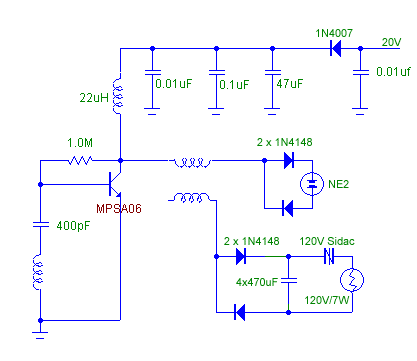
The current Stiffler Driver able to produce significant excess
Heat in a 1K ohm carbon resistor.
Heat gains in excess 500% while the driver transistor runs
cool.
12-25-2007
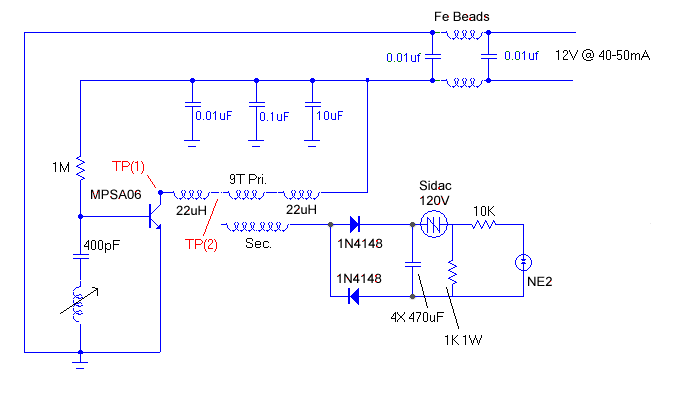
Do calculations match/show the gain?
|
Stiffler Driver 12-25-2007 Energy from the capacitor during the Sidac switch (On) period Jc = ( C * ( Vmax^2 - Vmin^2 )) / 2 where; Vmax = the
max. voltage on C before sidac turns On Because the output is pulsed, find the rms power value Wrms = Jc * sqrt( Ton / ( Ton+Toff )) where; Ton = time
sidac is On (sec.) discharging C The power gain or loss P% = ( Wrms / ( Vs * Is )) * 100 where; Vs = power supply
voltage
Important Waveforms
Parts: 1ea. Sidac 120V, LittleFuse #K1300E70 |
One of the first circuits showing Energy Coherence
A standard Colpitts Oscillator design followed by a
MOSFET impedance
matching driver to the AV Plug and load. The circuit is high
in parts count
but offers a good amount of stability. Some frequency
adjustment is possible
by using a variable inductor for L1.
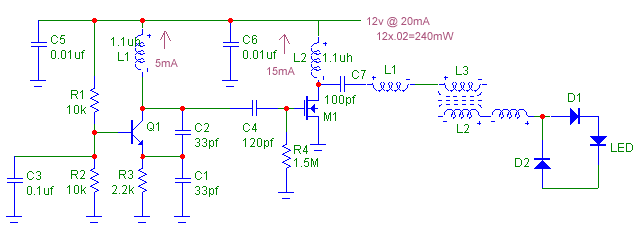
Spatial Energy Coupling between Active and Passive energy coils
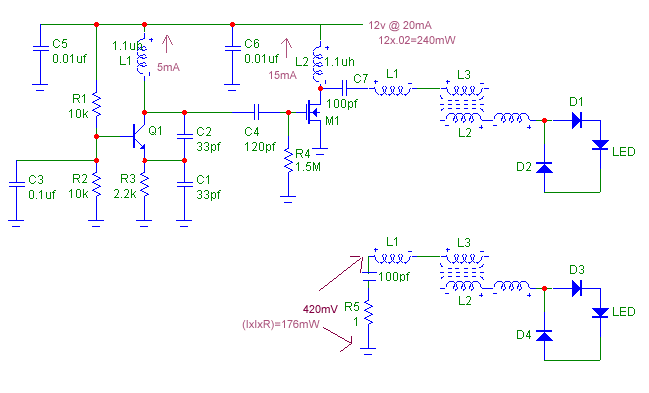
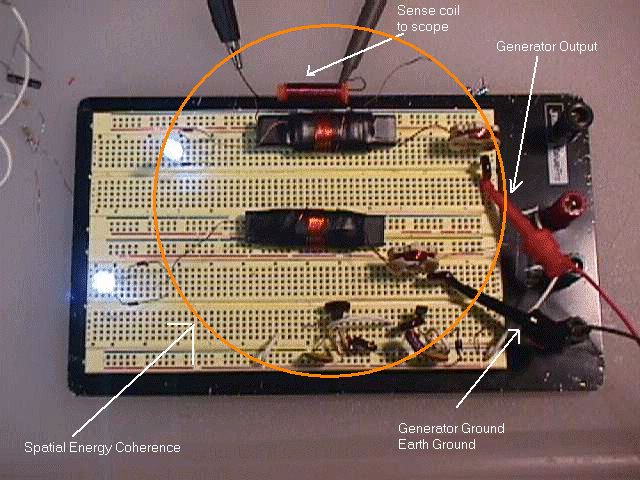
Stiffler Driver / Amplifier
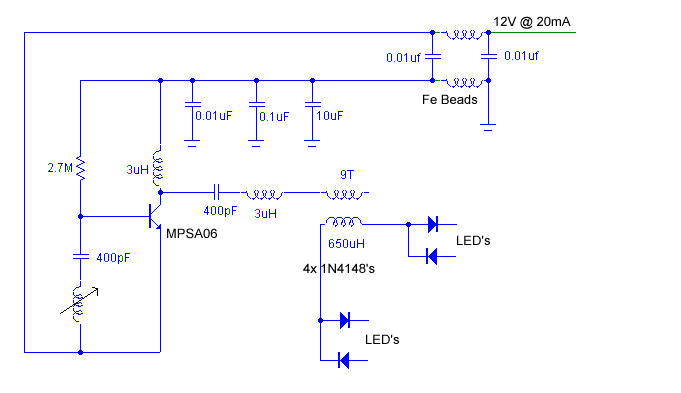
In the Stiffler Driver / Amplifier a variable
inductor is included in the base circuit to ground. This inductor is not
coupled
to the Collector or Output coils, it is rather free standing and
isolated from mutual coupling. The output circuit is a standard
SEC design
where one end of the Primary is open and both ends of the Secondary are driving
loads, but floating above the
driving circuit. The illustrated design was
tested with an input of 12 volts at 20mA for a power in of 240mW. Each side of
the
Secondary was loaded with 17 White LEDs for a total of 34. The current in
the load legs was 5mA with an average drop
across the LEDs of 3 volts.
Therefore the load was 34 x 3 x 0.005 = 510mW. The base operating
frequency was 9.87MHz.
A SEC Driver Submitted by Mark McKay, PE
Named in the
honor of Bedini
The Bedini Driver for SEC Research
The following image is of the circuit design and
test configuration used by Mark McKay, PE for testing and exploring
the
validity of Spatial Energy Coherence. Mr. McKay is an active researcher
exploring the SEC Hypothesis and is attempting
to not only replicate but
explain in conventional Electrical Engineering what the SEC phenomenon is
about.
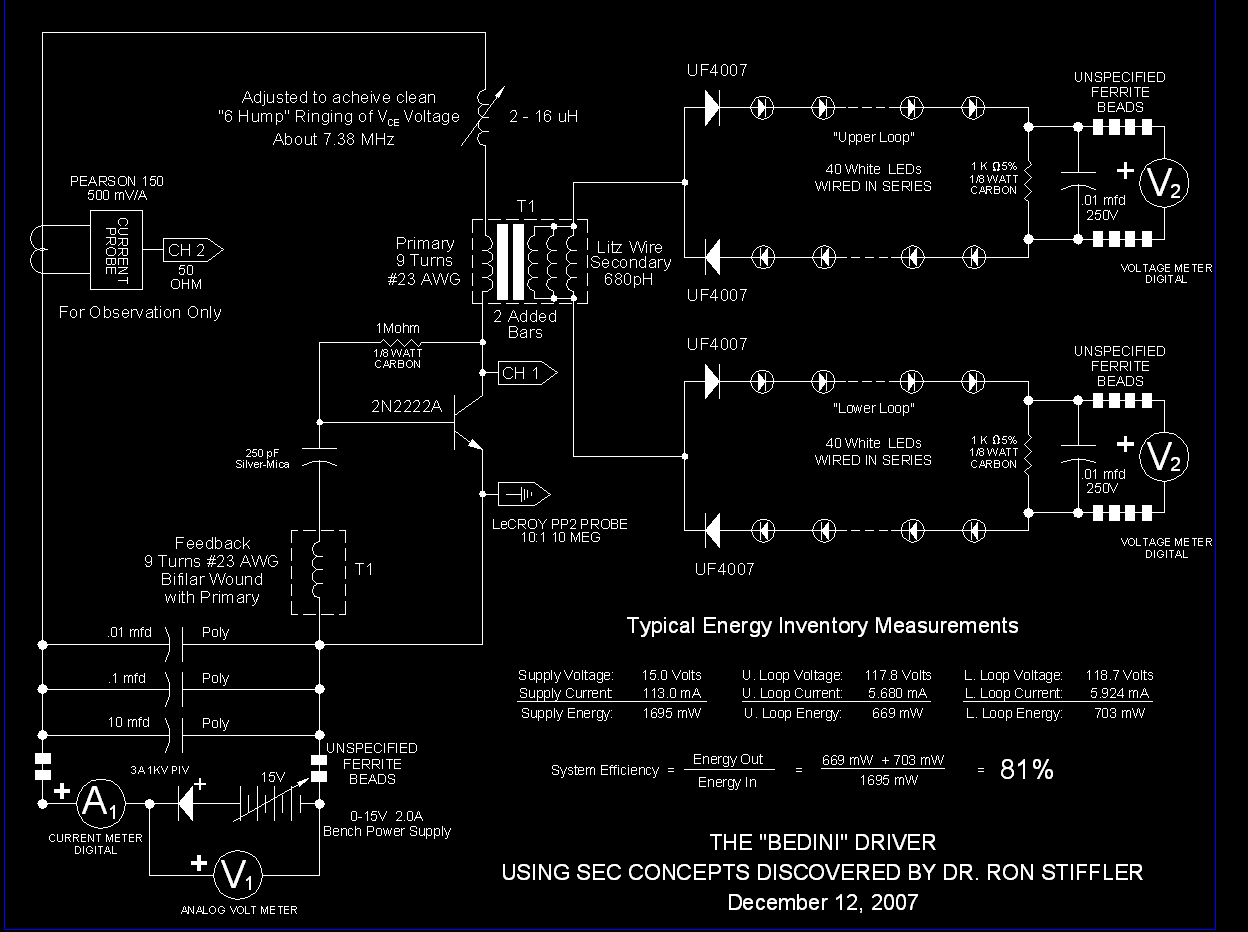
The 'Callanan Driver' Circuit
by: Permission of the
Inventor
This oscillator design is unique and is able to
provide a large dive to the loads
although I have not seen this driver
exhibit the ability to Cohere Excess Energy.
It appears that the closed
design, except for the AV Plug does not provide the
proper interface to the
Spatial Lattice. This circuit should not be ignored and
should be looked at
in during continued experimentation.
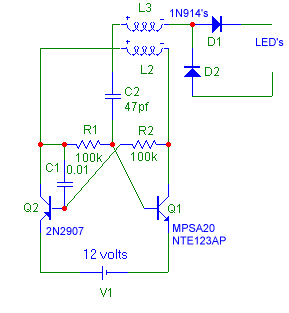
One of the more advanced associate researchers using the
'Callanan Driver'
his own design, simple and vastly robust circuit
driver.
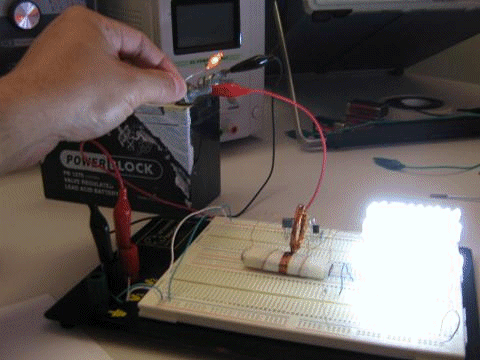
The 'Thomas' Oscillator
by: Permission of the inventor
A very good oscillator
that is simple and highly effective.
Certain small
modifications have been made from the original
with permission of the
Inventor.
This oscillator contains the lowest parts count of
all circuits explored thus far. In fact in
many cases the capacitor from the
base to ground was not required. This circuit as with the
Thomas Oscillator
is able to provide a considerable amount of energy to the load, although
as
with the Thomas circuit I have not observed the circuit's ability to interface
with the
Spatial Lattice and Cohere additional energy. I believe this is
again the result of the closed
design of the circuit.
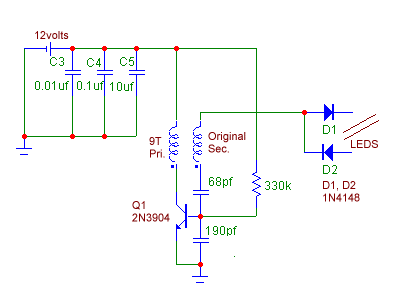
Q1 should have an hfe >= 195
Bandwidth of
200-300mHZ
The 330k only helps start the oscollator and draws at max.
34uA
do not increase the value as low hfe transistors may not start.
The
68pf and 190pf capacitors form a voltage divider to limit the
drive to the
Base.